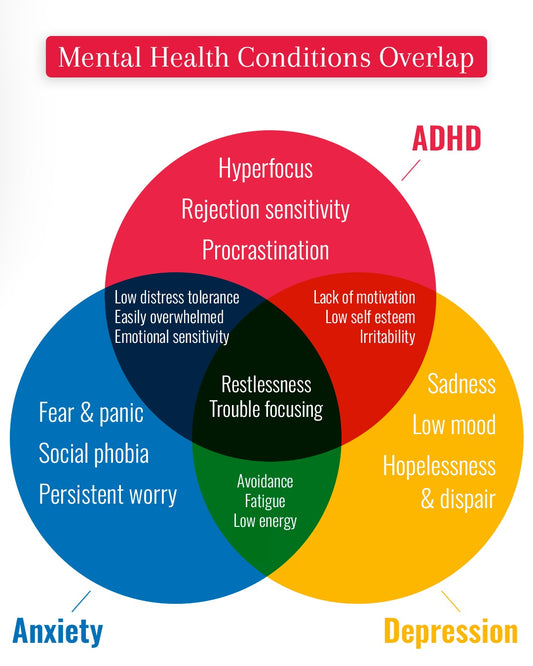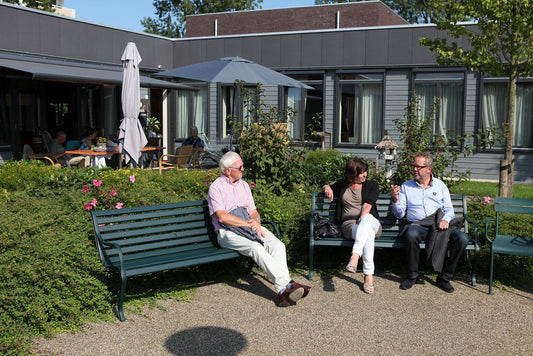
Dementia Villages: A Revolutionary Approach to Memory Care
By 2060, the number of Americans living with Alzheimer’s disease is expected to exceed 14 million, according to the Centers for Disease Control and Prevention (CDC). As this crisis looms, many families will face the emotional and financial burden of caring for loved ones with dementia. For some, the decision to move a loved one into a memory care facility will be inevitable. However, an innovative alternative—dementia villages—offers a new vision for long-term care.
1. Traditional Memory Care Units
Traditional memory care facilities, though functional, often lack warmth and familiarity. Commonly, residents are surrounded by institutional hallways, with staff dressed in medical scrubs and outdoor areas feeling restricted. Even dining spaces often lack the comforting presence of a visible kitchen, making the environment feel foreign to those with dementia.
For individuals with memory disorders, such an unfamiliar setting can lead to stress, anxiety, and agitation. These emotional responses are often managed with medication to maintain calm and cooperativity. However, there is growing recognition of the value of non-pharmacological interventions that focus on creating more supportive and engaging environments for dementia patients.
2. The Concept of Dementia Villages
Dementia villages, first conceptualized in the Netherlands with the 2009 opening of Hogeweyk in Weesp, offer a stark contrast to conventional facilities. These villages are designed to emulate real-life communities, incorporating parks, restaurants, grocery stores, hair salons, theaters, and more. Staff members blend seamlessly into the environment, wearing casual clothing like aprons or gardening overalls, depending on their roles.
One key feature of dementia villages is their walkable design, free of cars, allowing residents to move about safely. Housing arrangements mimic shared homes with private and communal spaces, offering a natural transition between private and public life. Residents can step out into a front yard, observe neighbors walking by, or visit community spaces like cafes and stores, fostering a sense of autonomy and belonging.
According to research by the University College Lillebaelt, relatives of dementia village residents reported that these environments enable a "familiar and meaningful everyday life." One family member shared:
"My mother enjoys shopping in the small store and the ability to buy something as simple as chocolate or soap. It’s something she misses, as she can no longer go out on her own."
3. Global Examples of Dementia Villages
The Hogeweyk Model
Carpe Diem in Norway
NewDirection Care in Australia
Together by the Sea project
4. Traditional Care Homes vs. Dementia Villages
| Feature | Traditional Care Homes | Dementia Villages |
|---|---|---|
| Environment | Institutional, often sterile and unfamiliar | Home-like, designed to mimic real communities |
| Safety | Restricted movement with limited outdoor access | Open, walkable neighborhoods with no cars |
| Social Interaction | Limited, with fewer natural opportunities for engagement | Encouraged through shared spaces and activities |
| Staff Roles | Clearly identifiable (scrubs or uniforms) | Integrated into the environment (e.g., aprons) |
| Daily Activities | Often planned and group-based | Resident-driven and reflective of real-life routines |
| Autonomy | Residents follow facility routines | Residents maintain control over their daily choices |
| Cost | Generally more affordable but varies | Higher costs due to specialized infrastructure |
| Integration with Community | Minimal, isolated from wider community | Encouraged, with community members invited to participate |
5. Barriers to Adoption
While dementia villages represent a paradigm shift in memory care, there are significant barriers to widespread adoption:
- Cost: Constructing specialized facilities is expensive, and their maintenance requires significant resources.
- Staffing Challenges: With aging populations, finding enough trained care providers is a growing concern.
- Insurance Limitations: Medicare and other insurance programs often fail to fully cover long-term care costs, making dementia villages financially inaccessible for many families.
6. A Vision for the Future
Despite these challenges, dementia villages showcase the potential for a better quality of life for individuals with dementia. Their holistic approach—combining safety, autonomy, and community—addresses many shortcomings of traditional care.
Innovative projects like Avandell in New Jersey aim to adapt this model for U.S. residents, integrating care facilities into larger communities. However, systemic changes, such as increased government support and public awareness, are essential to make these villages more feasible.
7. Tips for Creating Dementia-Friendly Environments at Home
Transforming a home into a dementia-friendly space can improve comfort and reduce anxiety for individuals with dementia. Below are practical tips:
Design for Familiarity
- Use personal decor, family photos, and cherished objects to create a comforting environment.
- Avoid significant changes to layout or furniture placement to maintain familiarity.
Ensure Clear Navigation
- Maintain clear, uncluttered pathways to prevent confusion and falls.
- Use signage or visual cues, such as labeled drawers and color-coded areas, to help with orientation.
Prioritize Safety
- Install grab bars in bathrooms and along staircases.
- Use locks or alarms on doors to prevent wandering.
- Secure hazardous items like sharp objects and cleaning supplies.
Create Soothing Sensory Experiences
- Incorporate calming colors, soft textures, and gentle lighting.
- Use sensory items like memory boxes, scented candles, or music players to evoke positive memories.
Incorporate Nature
- Provide access to outdoor spaces like gardens or patios.
- Use potted plants, flowers, or nature-inspired artwork indoors to create a serene atmosphere.
Encourage Routine and Autonomy
- Maintain consistent daily routines to reduce stress.
- Allow the person to make choices about meals, clothing, or activities to support their independence.
Include Interactive Spaces
- Create spaces for hobbies such as knitting, painting, or gardening.
- Set up a small, safe kitchen area where they can engage in simple cooking tasks under supervision.
Use Technology Thoughtfully
- Consider using GPS tracking devices for added safety.
- Use digital photo frames to display rotating family pictures or videos.
By implementing these tips, caregivers can create a supportive and comforting environment at home, promoting a higher quality of life for individuals with dementia.
8. Conclusion
Dementia villages offer a compassionate and inclusive alternative to traditional memory care, emphasizing dignity, autonomy, and meaningful engagement. As the global dementia crisis grows, expanding access to these innovative communities will be critical in shaping the future of care. By addressing barriers and fostering collaboration across sectors, we can move closer to a world where those with dementia can live with dignity, purpose, and connection.



